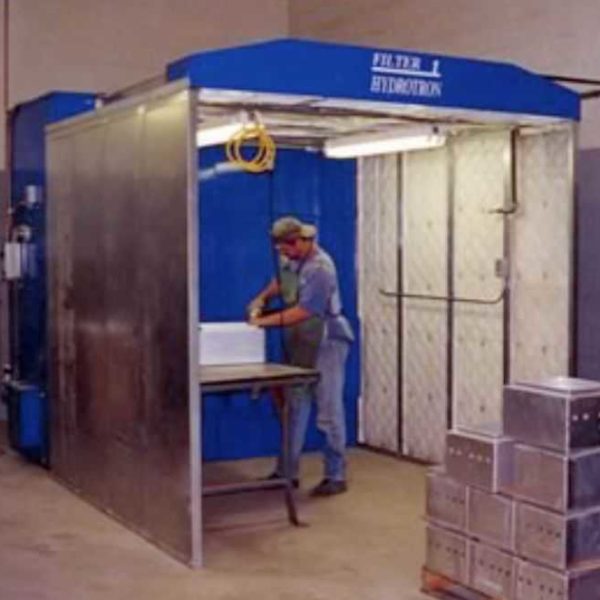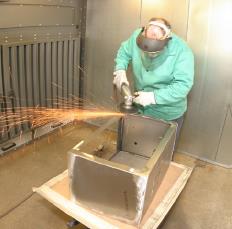Dust Control Booths
Dust collection booths, sometimes referred to as sanding booths, provide a self-contained area for maximum control and removal of airborne contaminates. The dust booth can be sized based on your configuration requirements. Contaminated air is drawn into the back of the booth where the air is filtered. Clean air is returned via overhead duct system to a clean air plenum located across the collection booth opening. The clean air pushes the contaminated air to the back of the dust booth.

Filter-1 Dustron
With high capture velocity, a quiet system and low energy consumption; it’s easy to see why the Filter-1 Dustron is the industry leader in push-pull regain air. Unlike other dust booths, which depend on air suction velocity of 140 FPM, the Dustron has a velocity of 400 FPM. Dustron also operates at a 40-60 percent lower pressure drop than other dust booths, resulting in lower energy consumption and a longer-lasting product.

Filter-1 Hydrotron HPB
Booth collectors provide a large open area to provide a push-pull ventilation system to contain potentially explosive contaminated air. Common dust collection applications include grinding aluminum, titanium, and explosive aerospace composites. The booth itself allows more freedom of work space while the wet collection process eliminates potentially catastrophic explosions associated with collecting the fine particulates. Booths are customizable to suite your needs and have multiple accessories to choose from including crane slots, enclosed lights, regain air diffusers and sludge conveyers.

Parker MCB DustHog
This completely self-contained system provides high-filtration efficiency, freedom from source capture obstructions and easy maintenance. Plus, it offers versatile configurations—available as a single unit or in combination with a containment booth.Ideal for applications where source capture is impractical, MCB units remove fine airborne dust resulting from a variety of finishing operations. Because workers benefit from complete freedom of movement, excellent lighting and a clean breathing zone, they can easily perform any type of manufacturing process—from grinding, sanding and welding to abrasive blasting, batch mixing and powder coating.

